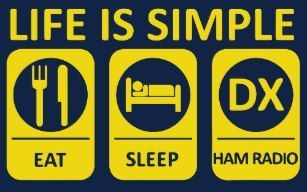What is a repeater and how do they work?
Most new hams have listened to a 2 meter repeater either on a scanner or that 2 meter HT they hope to be using soon. But how many of you really understand what a repeater is and how it works.
In simple terms it is a transmitter and receiver that both work at the same time. (Unlike your HT which is either a receiver or transmitter but not both at the same time)
Let’s follow the signal:
1. You transmit on frequency A to the receiver of the repeater.
2. The repeater recognizes the signal and turns on the transmitter on frequency B.
3. The audio from the receiver passes to the transmitter and goes out on freq. B.
4. The other ham receives the signal on frequency B and hears what you have to say.
5. When you are done you release the button and your radio now goes to the receive mode.
6. The repeater will automatically stop transmitting if it does not receive a signal for a predetermined time.
7. The other ham hears the repeater turn off and knows it is her turn to transmit.
8. She pushes the button and begins talking to you.
9. The repeater hears her transmitting on Freq A and starts transmitting again on Freq B.
There are a LOT of other parts that need to be present to make this happen. A few terms you might hear are Carrier Operated Relay, squelch-tail, CW ID, duplexer, feedline, broadband antenna and PL.
Most repeaters operate on pairs of frequencies that are coordinated by a regional group who allocate frequencies. You would need to make a proposal to use a pair and when permission is granted you may activate that pair in the location you provided to the coordinators. The same frequency pair might be used a hundred miles away if it is determined that no interference will be caused. A term you might hear is on what “split” is the repeater operating. This simply refers to the difference in transmit and receive frequencies. Above 146 MHz it will usually be a positive offset…the transmit frequency of the repeater is 600 KHz away.
To prevent interference the repeater might be looking for your transmitter to also produce a subaudible tone. This tone tells the repeater that your signal is intended for its receiver. There are many names for that tone but the most common are PL (Motorola) or CG (GE).
73 WA2NTW

